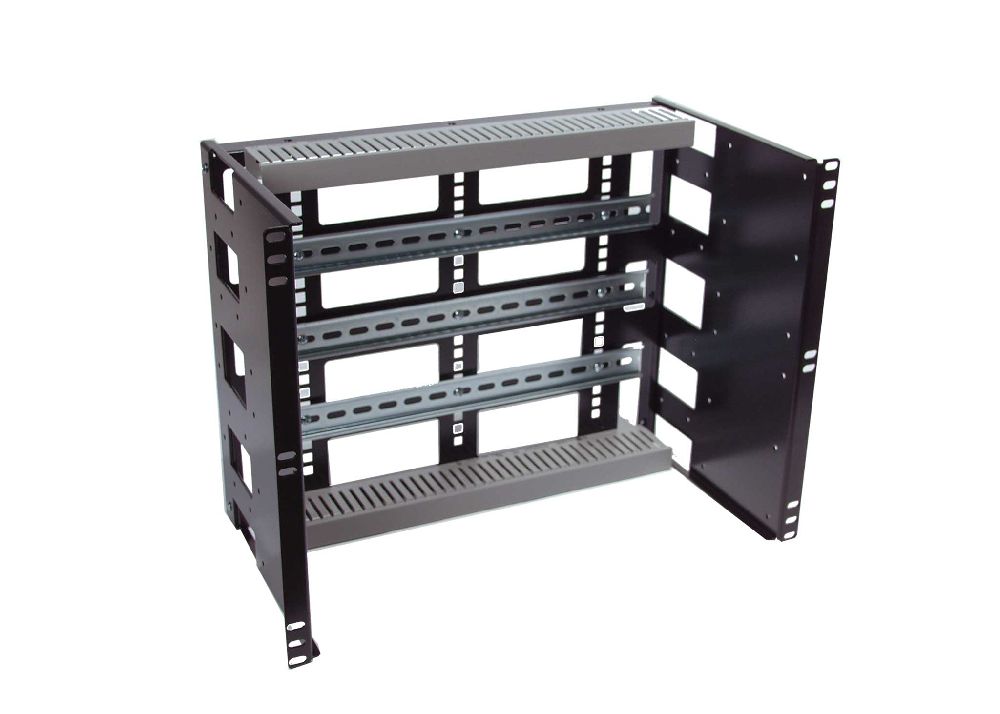What is Din Rails?
Din Rails commonly known as Deutsches Institut für Normung (German Institute for Standardization) are like the orchestrators of electrical components within control panels and enclosures. They provide a standardized base for mounting devices ensuring efficiency in organizing intricate wiring systems.

Importance in industrial applications
In the industrial domain where reliability and efficiency reign supreme Din Rails serve as a crucial framework for organizing components like terminal blocks relays circuit breakers and sensors. This structured methodology not only simplifies installation maintenance and troubleshooting processes but also substantially enhances overall system performance.
Types of Din Rails
Din Rails offers a plethora of sizes and configurations akin to a treasure trove of diverse options tailored to specific requirements. These rails are categorized into three primary types:
Standard Din Rails: Imagine these as the backbone of any structure offering stability and ease of installation with strategically positioned mounting slots or holes – making them an indispensable choice in various applications.
Mini Din Rails: In the landscape of rail systems mini Din Rails carve a niche with their compact size compared to standard alternatives. They excel in situations where spatial limitations are critical especially in configuring control panels for small machinery setups.
Top Hat Din Rails: Introducing a broader top area reminiscent of a stylish top hat these rails provide heightened stability and solid backing for heavier components.
Advantages of Using Din Rails
Din Rails plays a pivotal role in ensuring organization and neatness by orchestrating the systematic arrangement of components. This not only reduces clutter but also eliminates confusion within control panels promoting efficiency and clarity simultaneously.
Ease of installation: Mounting devices onto Din Rails has been simplified by the presence of predrilled holes or slots rendering the process quick and uncomplicated thereby reducing both installation time and effort.
Din Rails introduces a realm of unparalleled flexibility and customization transforming system design into a dynamic and adaptable process. Their unique feature allows for seamless rearrangement or addition of components empowering designers to tailor systems with precision and ease fostering a culture of innovation and adaptability.
Components of Din Rail Systems
Mounting brackets: Mounting brackets act as the backbone anchoring the Din Rails to the panel or enclosure preserving stability and exact alignment.
Terminal blocks: Terminal blocks hop onto Din Rails creating connection points for wires turning wiring and maintenance tasks into a breeze.
End clamps: End clamps as vital accessories play a crucial role in securing the ends of the Din Rails effectively prnting any undesired movement or dislodgment of the mounted components.
Applications of Din Rails
Utilizations of Din Rails Spanning Diverse Industry Sectors
Industrial automation: Industrial automation is akin to empowering machinery control panels with extraordinary capabilities seamlessly weaving together sensors actuators and various automation components.
Power distribution: Din Rails emerge as vital components, their role lies in facilitating the mounting of circuit breakers relays and power meters ultimately streamlining and optimizing power management tasks.
Home automation: In residential environments, Din Rails play a vital role in the realm of modern smart home systems. They are instrumental in facilitating the seamless integration of lighting controls HVAC systems and security devices.
How to Install Din Rails
When opting for Din Rails ensure you consider aspects such as the enclosure's size component weight and the unique requirements of the application.
Let's proceed with the mounting process step by step: To commence securely attach the mounting brackets to the panel or enclosure using the appropriate fasteners. Align the Din Rail with the brackets and firmly secure it in place. Lastly, mount the desired components onto the rail using the screws or clips provided.
Maintenance of Din Rails
Regularly inspect your Din Rails with tender care akin to checking on a dear possession. Look out for any hints of damage or corrosion and delicately cleanse them using a soft brush or cloth to bid to dust and debris.
It is crucial to promptly replace any damaged or malfunctioning components or accessories attached to the Din Rail to ensure system integrity and reliability are upheld.
Common Mistakes to Avoid When Using Din Rails
Ensure you do not exceed the designated weight limit of Din Rails to prevent structural damage and compromised performance.
In matters of electrical safety overlooking the significance of meticulous wiring practices can lead to dire consequences. Therefore one must ensure the precise termination and strategic routing of wires to forestall potential hazards like short circuits voltage drops and other critical electrical issues.
Future Trends in Din Rail Technology
Integration of IoT: Din Rail systems have entered a new era with the integration of IoT capabilities. This advancement enables users to seamlessly monitor diagnose and control connected devices from a distance.
Enhancing robustness and efficiency: Constant innovations in materials and design are beefing up the durability and efficacy of Din Rail components extending their lifespan and amping up system performance.
Conclusion
Din Rails serve as vital components in industrial and automation environments providing a trustworthy and effective solution for mounting electrical and electronic devices. Understanding different types of benefits applications installation steps and maintenance requirements enables you to maximize the performance and longevity of your systems.
You Might Also Like: What is Lan? Local Area Network








